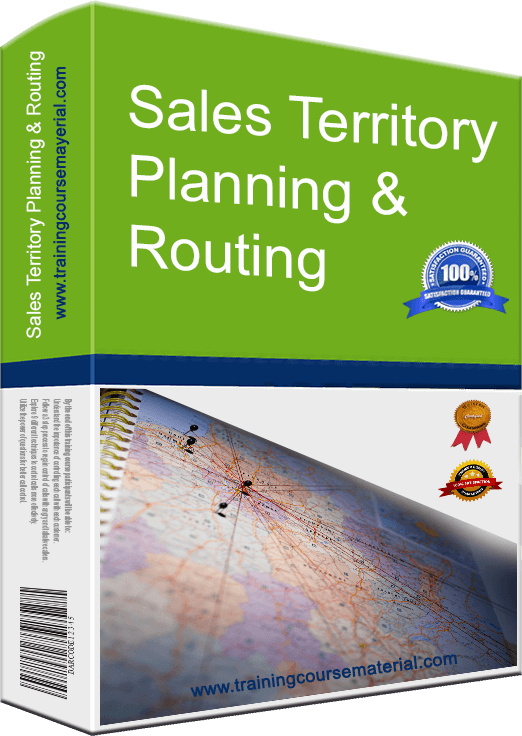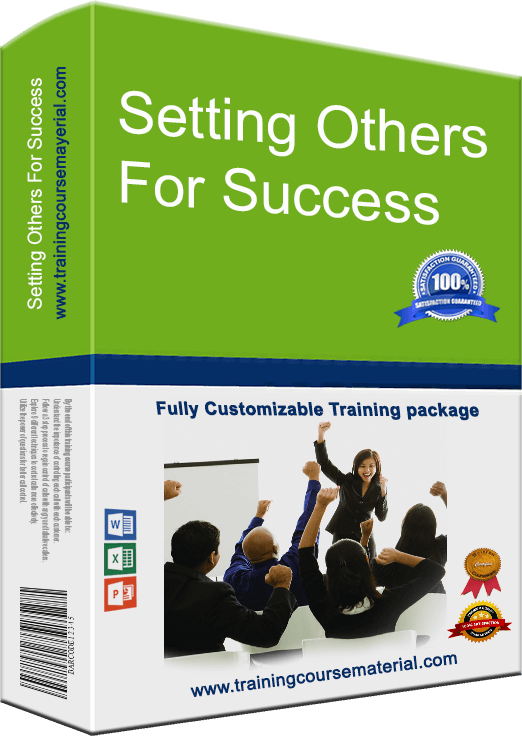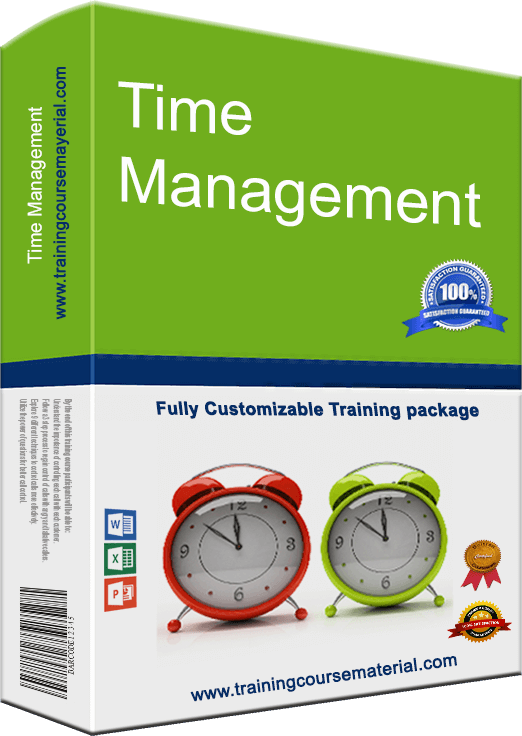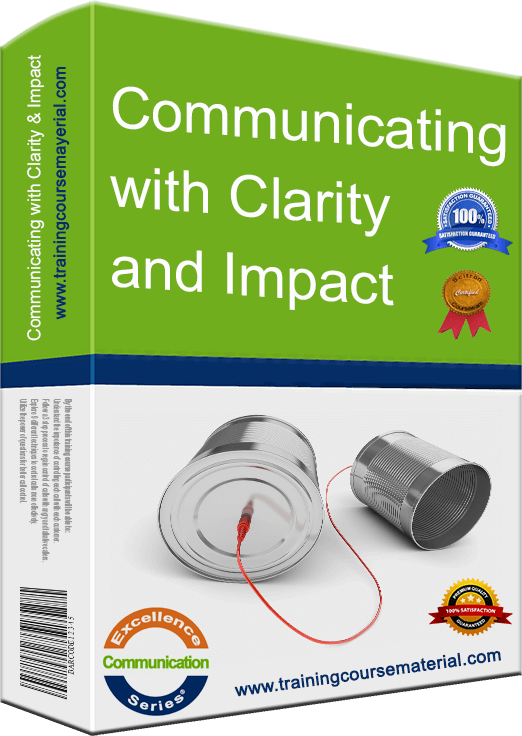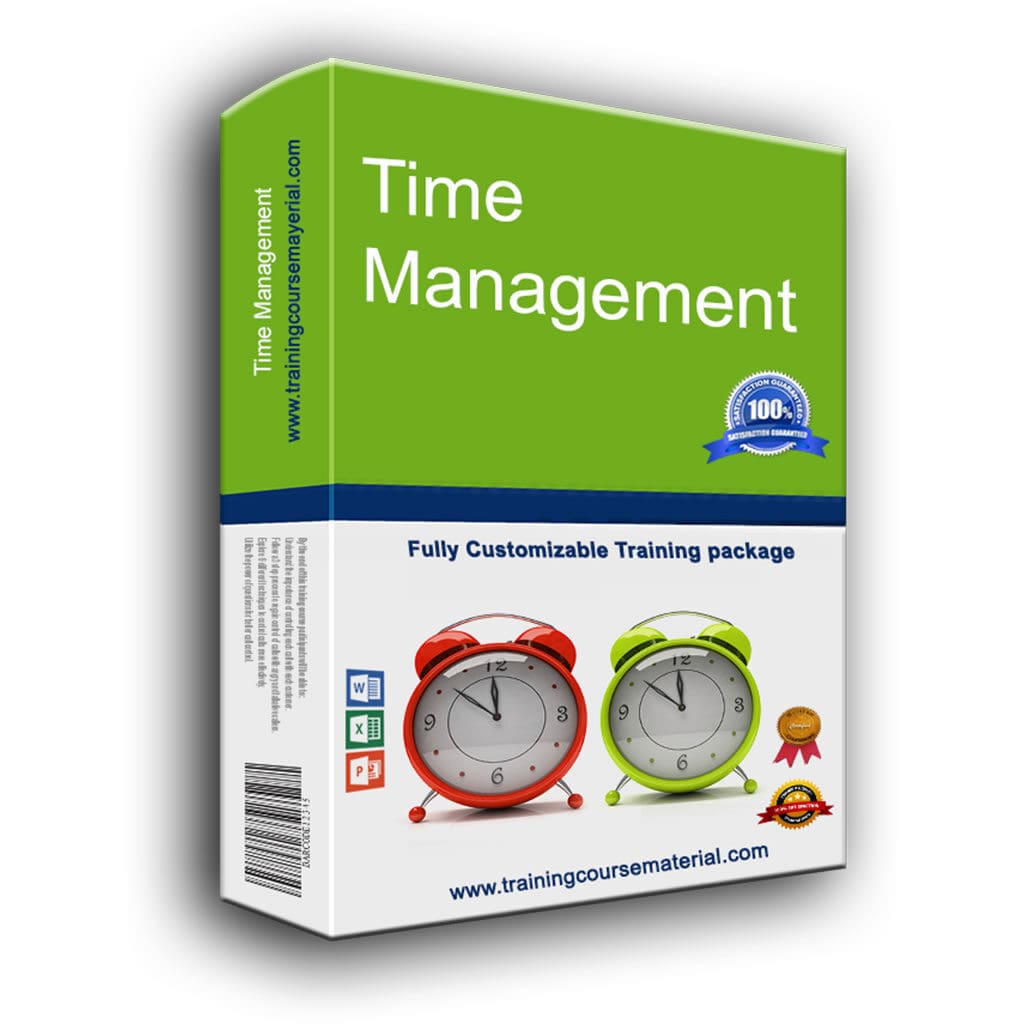Situational Leadership
Blanchard – Hersey Model
What is Situational Leadership?
The Situational Leadership method from Kenneth Blanchard and Paul Hersey holds that managers must use different leadership styles depending on the situation. The model allows you to analyze the needs of the situation you're in, and then use the most appropriate leadership style. Depending on employees' competences in their task areas and commitment to their tasks, your leadership style should vary from one person to another. You may even lead the same person one way sometimes, and another way at other times.
Blanchard and Hersey characterized leadership styles in terms of the amount of direction and of support that the leader gives to his or her followers, and so created a simple matrix as follows:
Situtional Leadership Model Blanchard - Hersey
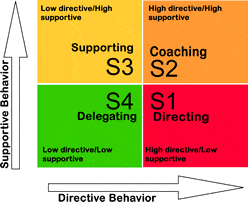
The Leader’s Behavioral Leadership
• S1 - Telling / Directing - High task focus, low relationship focus - leaders define the roles and tasks of the 'follower', and supervise them closely. Decisions are made by the leader and announced, so communication is largely one-way. For people who lack competence but are enthusiastic and committed. They need direction and supervision to get them started.
• S2 - Selling / Coaching - High task focus, high relationship focus - leaders still define roles and tasks, but seeks ideas and suggestions from the follower. Decisions remain the leader's prerogative, but communication is much more two-way. For people who have some competence but lack commitment. They need direction and supervision because they are still relatively inexperienced. They also need support and praise to build their self-esteem, and involvement in decision-making to restore their commitment.
• S3 - Participating / Supporting - Low task focus, high relationship focus - leaders pass day-to-day decisions, such as task allocation and processes, to the follower. The leader facilitates and takes part in decisions, but control is with the follower. For people who have competence, but lack confidence or motivation. They do not need much direction because of their skills, but support is necessary to bolster their confidence and motivation.
• S4 - Delegating - Low task focus, low relationship focus - leaders are still involved in decisions and problem-solving, but control is with the follower. The follower decides when and how the leader will be involved. For people who have both competence and commitment. They are able and willing to work on a project by themselves with little supervision or support.
Effective leaders are versatile in being able to move around the matrix according to the situation, so there is no style that is always right. However, we tend to have a preferred style, and in applying Situational Leadership you need to know which one that is for you. Likewise, the competence and commitment of the follower can also be distinguished in 4 quadrants.
Development Level of the Follower
• D4 - High Competence, High Commitment - Experienced at the job, and comfortable with their own ability to do it well. May even be more skilled than the leader.
• D3 - High Competence, Variable Commitment - Experienced and capable, but may lack the confidence to go it alone, or the motivation to do it well / quickly.
• D2 - Some Competence, Low Commitment - May have some relevant skills, but won't be able to do the job without help. The task or the situation may be new to them.
• D1 - Low Competence, High Commitment - Generally lacking the specific skills required for the job in hand, but has the confidence and / or motivation to tackle it.
Similar to the leadership styles, the development levels are also situational. A person could be skilled, confident and motivated for one part of his his job, but could be less competent for another part of the job.
Blanchard and Hersey said that the Leadership Style (S1 - S4) of the leader must correspond to the Development level (D1 - D4) of the follower - and it's the leader who adapts. By adopting the right style to suit the follower's development level, work gets done, relationships are built up, and most importantly, the follower's development level will rise to D4, to everyone's benefit.
Steps in the Situational Leadership Process
1. Make an overview per employee of his/her tasks
2. Assess the employee on each task (D1...D4)
3. Decide on the leadership (management) style per task (S1...S4)
4. Discuss the situation with the employee
5. Make a joint plan
6. Follow-up, check and correct
Strengths (Advantages) of the Situational Leadership model.
• Easy to understand
• Easy to use
Limitations (Disadvantages) of the Situational Leadership model.
- Model fails to distinguish between leadership and management. What is called leadership style is really management style.
- Leadership is not primarily about making decisions anyway - it is about inspiring people to change direction.
- Leaders may indeed vary the way they inspire people to change. But this is when they have already decided on the need to change. Hence leadership style does not reduce to decision making style.
- Focuses too exclusively on what the person in charge does.
Of course both leaders and managers have to behave differently in different situations. But that is just a trivial fact of life, rather than anything profound in terms of our basic understanding of what it means to lead or manage.
Assumptions/Conditions of Situational Leadership.
Leaders should adapt their style to follower 'maturity', based on how ready and willing the follower is to perform required tasks (that is, their competence and motivation). There are four leadership styles that match the four combinations of high/low readiness and willingness. The four styles suggest that leaders should put greater or less focus on the task in question and/or the relationship between the leader and the follower. Presumes that leadership is about how the boss makes decisions.
For more on leadership and management skills, check out our instant download Leadership skills training package "Lead, Motivate & Inspire" and management skills customizable training package "Managing People"
Leadership & Management Related Articles
- Action Centered Leadership
- Effective goal setting
- SMART goals
- Are you micromanaging?
- Managing Up
- Preparing a business plan
- Steps to Evaluate your staff
- Steps to discipline employees
- Make your meetings work
- Managing teams performance
- What to watch out for when evaluating employees
- Situational Leadership
- Leaders and Corporate culture

34 Full Courses & 6 Mini Courses
Get all available programs
& save ...!!
Price: $4499.95 $2995.95
Great Value For Money
Read More
Are You a
Visual, Auditory or Kinaesthetic ?
How well do you
cope under
pressure?
.
Are You A
people person?
.
Forward looking, or
Stuck in a time
warp?
How content
are you?
.
How soft-centred
are you?
.
Find Out
Your Leadership
Style
How
Emotionally intelligent are You ?

|
+ | 
|
The Presenter-Trainer Package®
Train The Trainer
Presenting With Impact
Price: $359.95 $299.95
SAVE $59.95
Read More
Retail Excellence Series®
3 Complete Courseware
Packages in 1
Frontline Retail Selling Skills
Retail Sales Planning & Forecasting
Passionate Retail Experts
Price: $539.855 $349.95
Pay for 2 Get 1 Free
Read More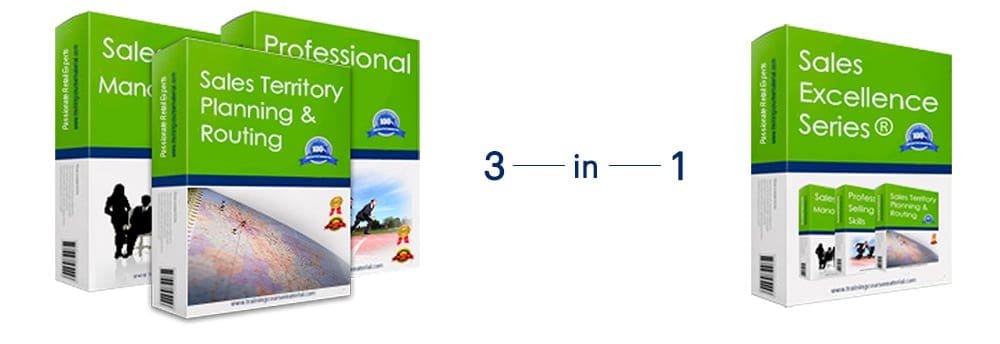
Sales excellence series®
3 Complete Courseware
Packages in 1
Sales Management
Professional Selling Skills
Sales Territory Planning & Routing
Price: $539.855 $349.95
Pay for 2 Get 1 Free
Read More
Call Center Excellence Series®
4 Complete Courseware
Packages in 1
Handling angry and difficult callers
Call control
Find a way to say YES!
Successful telephone debt collection
Price: $719.95 $449.95
Pay for 2 programs and Get 2 programs Free
Read More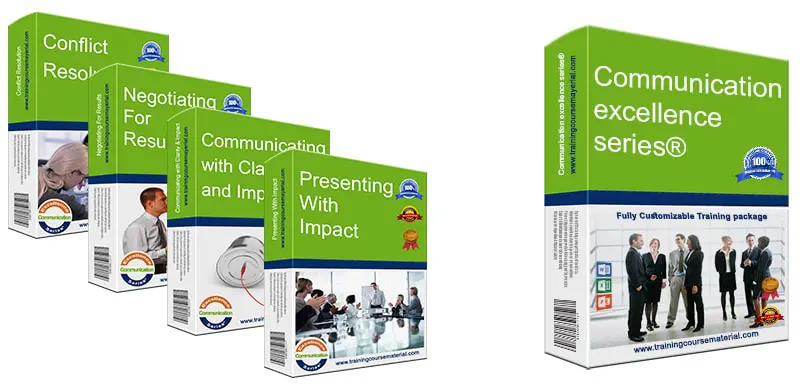
Communication Excellence Series®
4 Complete Courseware
Packages in 1
Communicating with clarity and impact
Negotiating for results
Conflict resolution
Presenting With Impact
Price: $719.95 $449.95
Pay for 2 programs and Get 2 programs Free
Read More
Customer Service Excellence Series®
5 Complete Courseware
Packages in 1
Vision, Energy & Passion To Serve
Pathways to service excellence
Find a way to say YES!
Passionate Retail Experts
Setting others up for success
Price: $899.75 $599.95
Pay for 3 Get 2 Free
Read More
Instant Download
Training packages
Price: $199.95 $179.95
No matter who you are, we all have 168 hours each week. Your ability to best utilize those 168 hours will ultimately determine your success. Using self-discovery, hands-on activities and innovative concepts, throughout this high energy training program, participants will learn how to get better control of their time and their life in general.
Price: $199.95 $179.95
A highly engaging one-day training program packed with a plethora of fun activities and games focusing on the key characteristics of high performing teams.
Price: $199.95 $179.95
All you need
to deliver a great training!
Our training material packages come with all you need to provide
a professional and accelerated learning solution with

High Impact
Power Point Slide Deck
To support immersive learning, a high impact professionally designed power point slide deck to engage trainees at all levels.

Student
Workbook
A comprehensive reference workbook you can give out to your class participants as a quick future reference.

Trainer
Guide
With step-by-step clear directions with tips and suggestions on what to say and how to present each slide.

Activity
/Exercise Sheets
Various training material and support documents to help you both explain and debrief the different exercises, activities and games Plus a fun final Jeopardy style review game as a fun ending for your training program.

Additional
Support Documents
To ensure you have all you need to deliver a complete and professional training program, additional supporting documents are included with each full course material package. From training evaluation forms to 5 different certificate templates that you can edit and hand out to your participants at the end of your training.

Job Aids
& Forms
Specific forms designed to extend and reinforce the training that participants can utilize back on the job to help them apply the new learned concepts (Select training material packages)












